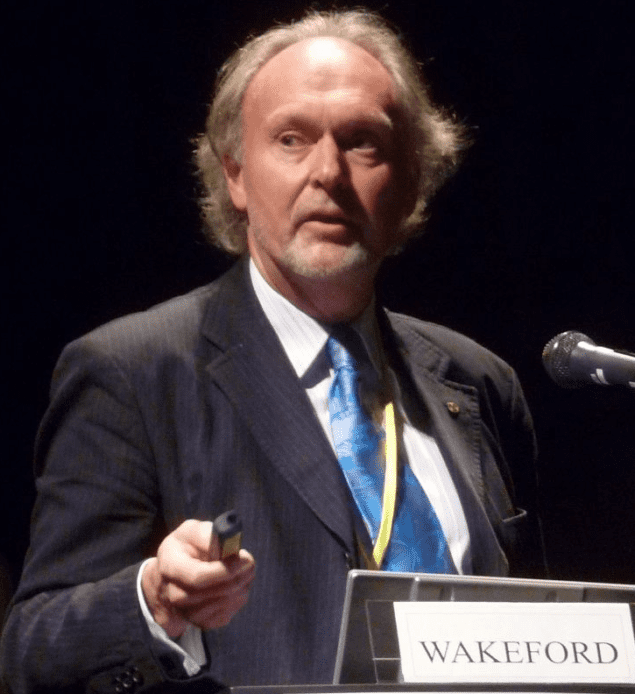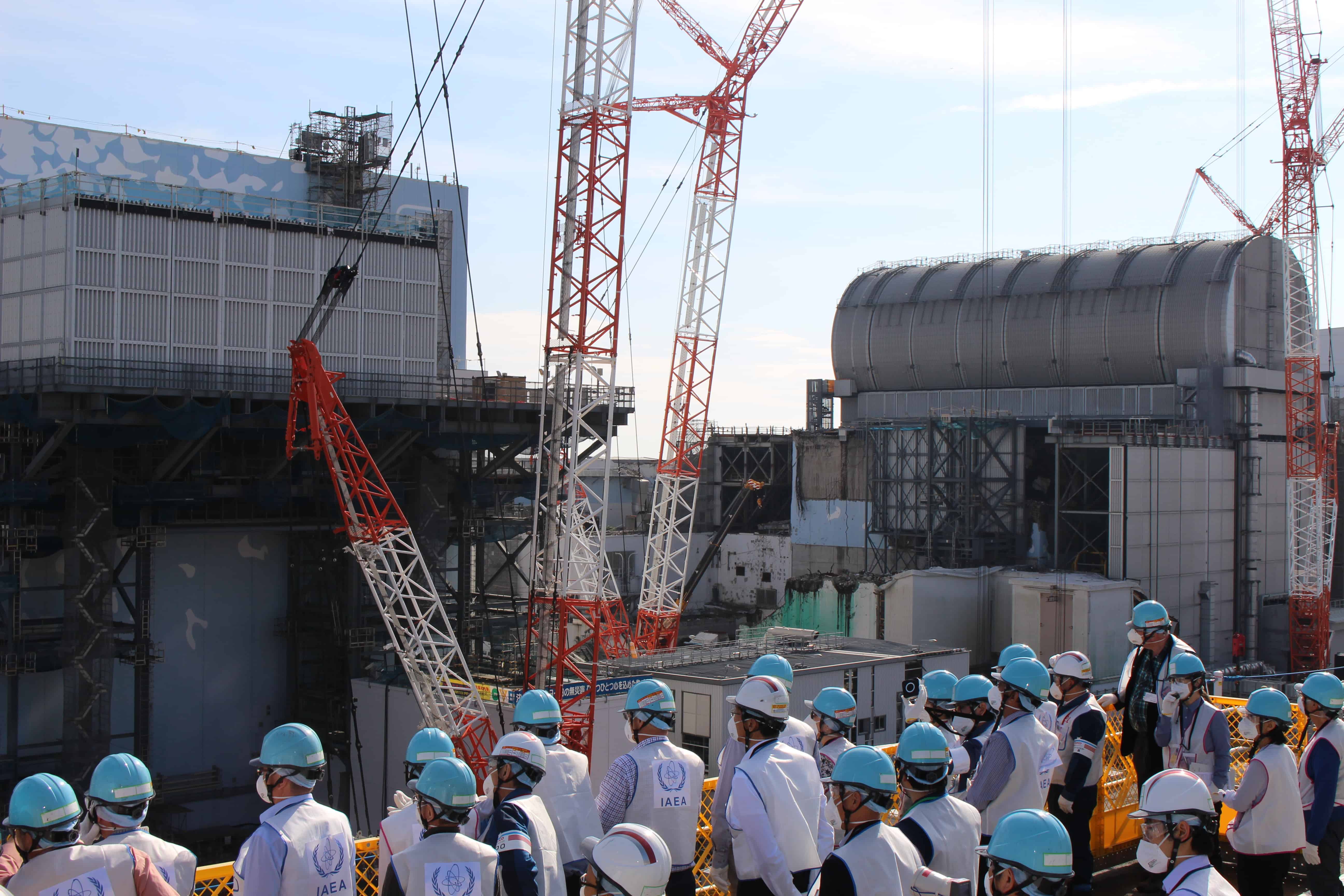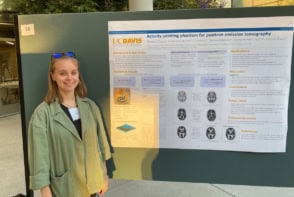The buzz around HBO acclaimed series Chernobyl demonstrates that nuclear accidents continue to capture the public imagination. But while the effects of exposure to high doses of radiation are shockingly clear, we are much less certain about the long-term impacts of low-level radiation, whether from accidents, occupational or medical exposures. Epidemiologist Richard Wakeford speaks to Physics World‘s James Dacey about the legacy of the Chernobyl and Fukushima accidents, and the challenges of picking out radiation effects from the multitude of other causes.

The Chernobyl disaster showed us that exposure to radiation can affect people to varying extents over different time scales, from acute radiation sickness to longer-term cancers. To take it back to basics, why does radiation harm us?
The health effects of radiation can be classed as two basic categories, usually these are referred to as deterministic and stochastic effects. Deterministic effects are high-dose effects, the sort produced close to an atomic explosion, or as a side effect of radiotherapy where high doses are involved, and the effects arise from cell killing. Radiation is actually a very good cell killer, hence the effect of radiotherapy on diseased cells. These acute effects, these deterministic effects, also affect healthy cells. If you kill off enough cells in an organ or tissue, it compromises its function and ultimately – as in the first responders of Chernobyl who got high enough whole-body doses – it kills them.
When you get down to lower dose levels, for example from natural background radiation or inhaling radon, then you do not get these cell-killing effects, because the levels of radiation exposure are not high enough. What you get are more subtle effects in the cell. These are modifications to the cell, conventionally of mutations in DNA. They do not kill the cell, but can lead to changes, such that in several years’ time this can develop into a cancer. Or if it is in a reproductive cell then a hereditary effect may occur in the descendants of the exposed individual.
You’ve written a lot about the challenges of picking out the impact of low-level radiation against the complex mix of other factors. Why is it so difficult to quantify the impacts of radiation exposure?
The basic problem boils down to this: there is not enough known about biology, and certainly not enough known about radiation biology. If it is a high enough dose, you know you are going to kill that person, or you are going to do some sort of damage to them. But at lower levels, then it is very tricky, and you do not know enough about radiation biology, so you fall back on epidemiology to derive risk estimates. Epidemiology involves looking at patterns of diseases in human populations to try and identify what might cause these patterns of diseases.
The big studies have involved the Japanese atomic bomb survivors. There, an enormous amount of effort has gone into following the health of approximately a hundred thousand survivors of the bombings of Hiroshima and Nagasaki in 1945, right up to now. It is still going on, because not all the survivors are dead. But in developed countries, perhaps between a third-and-a-half of everyone will develop some form of cancer at some time in their lives, for a number of reasons. If you are a smoker, for example, then the risk of lung cancer, and other cancers, goes right up because of the carcinogenic effects of inhalation of smoke. So, to extract a signal of lung cancer risk from exposure to radiation, let’s say in the bomb survivors, from the smoking pattern – and smoking dominates the risk of lung cancer – is a very tricky thing.
With those difficulties in mind, how do you assess the relative risk of exposure to low-level radiation?
You also get into the other noise of the background causes: genetic makeup, whether they take exercise, what they drink, what they eat. This background noise tends to be what dominates the overall risk of, let’s say cancer, and then the small additional risk arising from increased exposure to radiation is very difficult to pick out from this background noise. That is why there is still some uncertainty in just what level of risk there might be for everyday exposure to radiation, say if you go in to have a CT scan. We know it must be pretty low, otherwise the results of that exposure would be obvious for all to see, as it was for the highly exposed bomb survivors. But just what level there might be is more uncertain.
For the purposes of radiological protection, it is assumed that the increased risk is directly proportional to the dose of radiation that you have received, modified by certain factors, because we know that exposure of young people imposes more risk per unit dose than exposure of older people, and that women are more sensitive than men. That direct proportionality goes right the way down to the very lowest doses.
HBO’s recent TV series has reignited public interest in the 1986 disaster at the Chernobyl Nuclear Power Plant. What lessons did we learn from that disaster?
At Chernobyl, there were four units and it was Chernobyl Unit Four that exploded. These were rather unusual Soviet-style reactors, RBMK reactors, which were inherently unstable, and the operators were carrying out experiments on the reactor that they really should not have been doing. They were unauthorised experiments, and of course it led to the explosion of the reactor. I suppose one of the first lessons is what happened to the early responders, the first guys who had come to deal with all this exposed nuclear fuel on the ground; 134 of them suffered acute radiation syndrome because of the high doses that they had received and 28 of them died. Clearly now, if you can at all help it, you do not put people into those situations.
The next lesson to be learned there, which was applied for the more recent Fukushima accident in Japan, is that you have to move people out of harm’s way quickly, which they did not do after the Chernobyl accident. It took about 36 hours for people in the immediate vicinity of Chernobyl to be evacuated. While at the Fukushima Daiichi plant, as soon as it appeared that there were serious problems, they moved people out of an area of twenty kilometres in radius around the site just in case the worst happened.
How about the years since the Chernobyl accident – what have been the longer-term impacts and what have we learned?
The really bad thing, I guess, at Chernobyl is that children were allowed to continue to consume cow’s milk, which was heavily contaminated with radioactive iodine. Radioactive iodine concentrates in the thyroid gland, and it was already known before Chernobyl that children are particularly susceptible to an increased risk in the future of thyroid cancer. In the neighbourhood of Chernobyl, more than ten thousand children received thyroid doses in excess of one gray [J kg -1], which is more than a thousand times greater than you would receive in a year from natural background radiation. The consequences of that became apparent in the early 1990s, when relatively large numbers of thyroid cancers started to be detected in those who had been exposed as children, and that continues today. We have already seen thousands of additional cases of thyroid cancers, we can expect many more thousands of additional cases of thyroid cancers, as a consequence of that initial exposure to radioactive iodine. Fortunately, thyroid cancer is rarely fatal, because the thyroid gland can be removed, and so this exposure from Chernobyl has caused about fifty or so deaths so far, but that is out of several thousand thyroid cancer cases.
In Fukushima, they were of course aware of this. There was radioactive iodine released from Fukushima Daiichi. Fortunately, most of it went out to the east over the Pacific Ocean, but some of it did come back inland. The authorities were well aware of that, and certainly any contaminated milk was restricted from distribution. They were also aware of other contaminated food items. It looks like thyroid doses to children in Fukushima were very low, and certainly much lower than those received around Chernobyl.
The 30-kilometre exclusion zone around Chernobyl is still barely habited. While at Fukushima, some residents have started to return but some areas remain fully or partially restricted. In both cases, will some areas remain restricted indefinitely?
It will not be indefinite. If you take Chernobyl, for example, the principal contaminants there of concern were iodine-131, so that is the thing that caused much of problem of thyroid cancer – thyroid cancer among those that were exposed as children, to be exact. That has a half-life of eight days, so that is gone in 3 months, and then you have the radioisotopes of caesium, and these are the other volatiles that were emitted. So caesium-134 has a half-life of around two years, so that is essentially all gone now, and what is left there is caesium-137, which has a half-life of around thirty years, so that is much more of a protracted problem – it is called “groundshine”, the gamma radiation from caesium-137 that settled out in the environment. That is the principal problem in Fukushima, as well, and what is causing some of the areas that were evacuated after the accident at Fukushima to still be evacuated, and where resettlement has not been permitted.
But if you go back to some of these areas, then the environmental exposure to gamma radiation gives you a dose of fifty millisieverts or more per year, which compares with one or two millisieverts that you get from background radiation. At the moment, the Japanese authorities are working to a safety level of twenty millisieverts per year, to allow people to return. Exposure is falling away all the time, of course, through naturally occurring radioactive decay, but also through dilution in the environment – it is becoming buried, which shields the radiation. It is a problem. It will, of course, eventually go. In three hundred years, it is gone. But the question is what to do now for these settlements where there are still these high levels of contamination – pressure-hosing roofs, taking off top soil, these sorts of things. But it is very tricky, because this is a mountainous, forested area. If it rains, it brings down more contaminated soil from the mountain, so they have got a problem.

You’ve written in one of your papers about the psycho-social effects of experiencing an event like Chernobyl, and how it can have a long term impact on your health beyond the radiation effects?
I do not think that there is any doubt that there is this disaster syndrome. I mean, those that were evacuated as a consequence of Chernobyl or Fukushima, for example, do have, undoubtedly, a psychological impact, purely by the fact that they had to be relocated, maybe permanently. Some of the Chernobyl evacuees, of course, still have not been permitted to return to the exclusion zone, although some of them have, unofficially. So yes, there is that impact, and others, including changes in lifestyle. In terms of cardiovascular disease, it is more a question of, again, what people do in the background. Do they smoke? Are they obese? What do they eat? What is their genetic makeup? In terms of their overall risk, and background risk of cardiovascular disease, to try and extract a small radiation signal against that background of effects is tremendously difficult.
Coming back to Chernobyl, for example, there has been a book published recently [Manual for Survival: A Chernobyl Guide to the Future by Kate Brown] suggesting that the risks to health of the Chernobyl accident have been dramatically underestimated by the expert committees that have looked at this. But distinguishing the effects of radiation exposure from Chernobyl against the health effects which arise from the collapse of the Soviet Union, which was quite dramatic, is a real problem. If you look at Russia, the age-adjusted mortality rate in Russia is like a rollercoaster, reflecting the socioeconomic chaos that resulted from the collapse of the Soviet Union. In the 1990s, the mortality rate rocketed.
To distinguish a Chernobyl signal from that background is immensely difficult, and this is right across Russia, an enormous country. If anything, these effects are even more marked around Vladivostok in the far east of the country. I think what has happened is that many people have associated these more general health effects that they have experienced across the old Soviet Union, with Chernobyl, when in fact these effects would have been there had the Chernobyl accident never happened. This is really a classic example of the difficulties of epidemiology, and how mistaken it can be to associate various health effects with one thing, when in fact it is a more general thing that is causing those effects.
In recent years, both the Chernobyl exclusion zone and the Fukushima disaster area have attracted visitors interested and there are now a number of tours. What is it about these events and places that creates such profound fascination among people?
I guess it is sort of disaster tourism, isn’t it, really? I guess these things have such a position in the public imagination that they need to see these places. I went to Fukushima Daiichi six months after the accident with an international group of scientists to look at the place and talk to people, and to see what was going to be done. I have to say, it was fascinating. You go down to the site, which is a big site – it was six reactors, three were operational at the time of the earthquake – and see the damage that was done by the fifteen-metre tsunami!
I guess, having been there, it is the fascination of seeing the place. I have never been to Chernobyl, but I can understand why: here is one of the big, iconic disasters, particularly a nuclear disaster, and there is this fascination with things – radiation, nuclear, and all the rest of it. People are just fascinated by going to see the place, I guess. It extends to everyone, essentially.

What next for Fukushima?
Fukushima had a big impact on the nuclear power industry, with nations reacting with varying degrees of concern. Do you think it has changed public perception on whether nuclear power is actually worth the risk?
It had an enormous impact on public perception and the nuclear power programmes in Germany and Switzerland were shut down as a consequence, principally, of the Fukushima accident. From what I see of the situation, Chernobyl was the worst nuclear accident that there has been, but I guess people sort of said, “Well, this was an accident involving a strange Soviet-style reactor, in the Soviet Union, which was on its last legs, which dissolved into the various countries four years later”.
Japan was more of a shock. I mean here is a technologically advanced country, and running these standard BWRs [boiling water reactors] at the Fukushima Daiichi site, and that was a bit of a shock, because the nuclear industry had this concept of “defence in depth”. Fortunately, the Japanese on the east coast of Japan were well aware of the problems of big earthquakes off the coast, and big tsunamis – these are about one in a century occurrences. But although they built a six-metre-high anti-tsunami wall, of course that fifteen-metre wave went straight over the top of it and did considerable damage to the plant. The real problem was that the external power lines had been brought down. So, the diesel generators started up, as they should have done, to keep emergency services like pumps running, but they were situated in the basements of buildings, so they were flooded by the tsunami, and they were knocked out.
If you have a site like Fukushima Daiichi, which was operational in the 1970s, so it had been going for forty years or so, you could not rule out a big tsunami occurring at some point during its operational lifetime. So, defence in depth had failed, and it had failed in a technologically advanced country, which had a large number of reactors.
So what now for safety in nuclear power plants? Have we learned anything new from Fukushima?
I would hope so. There are a large number of nuclear power stations, for example, being built in China now. In the UK, there’s one being built at Hinkley Point and some elsewhere in Europe, so you would like to think that the importance of defence in depth has really hit home to those countries that run nuclear reactors. And there is reason to believe that it has, from the “stress tests” that have been run by regulatory authorities on these facilities to see if nuclear plant safety regimes can meet these sorts of challenges – loss of power, and all the rest of it.
So, I would hope that organisations such as the International Atomic Energy Agency have reminded their members of the importance of defence in depth, and of checking these systems, and having a proper and independent regulatory system in place, which has “teeth” if they do find something that an operator is not doing right.



